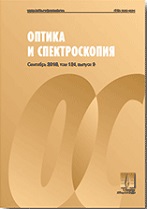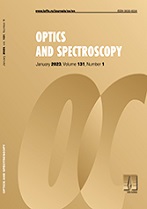|
This article is cited in 2 scientific papers (total in 2 papers)
Nanophotonics
An electrooptical method for studying the coagulation of nanodisperse systems: formation of aggregates of graphite particles in aqueous electrolytes
O. S. Vezo, A. V. Voitylov, V. V. Voitylov, M. P. Petrov, A. A. Trusov
St. Petersburg State University, Faculty of Physics
Abstract:
We demonstrate that the electrooptical method can be used to study the coagulation of liquid nanodisperse systems, in particular, colloids and suspensions. Two electrooptical effects have been used—one dependent and one independent of the polarization of light passing through the system in the electric field. The results of study of the coagulation kinetics at its early stage, associated with the formation of pair aggregates from graphite particles suspended in AlCl$_{3}$ и Th(NO$_{3}$)$_{4}$ aqueous electrolytes are presented. We show that the systems are stable in a wide range of electrolyte concentrations and lose their stability in a narrow range in which the electrokinetic potential of particles does not exceed 5 mV. We show that the electrooptically determined dependences of the particle concentration on the coagulation time at the isoelectric point agree well with the Smoluchowski theory of rapid coagulation.
Keywords:
electrooptical effects, coagulation, pair aggregates, colloids and suspensions, graphite particles, static and dynamic light scattering.
Received: 04.02.2020
Revised: 04.02.2020
Accepted: 19.02.2020
Citation:
O. S. Vezo, A. V. Voitylov, V. V. Voitylov, M. P. Petrov, A. A. Trusov, “An electrooptical method for studying the coagulation of nanodisperse systems: formation of aggregates of graphite particles in aqueous electrolytes”, Optics and Spectroscopy, 128:6 (2020), 713–721; Optics and Spectroscopy, 128:6 (2020), 719–728
Linking options:
https://www.mathnet.ru/eng/os391 https://www.mathnet.ru/eng/os/v128/i6/p713
|


|





 Contact us:
Contact us: Terms of Use
Terms of Use
 Registration to the website
Registration to the website Logotypes
Logotypes








 Citation in format
Citation in format 
